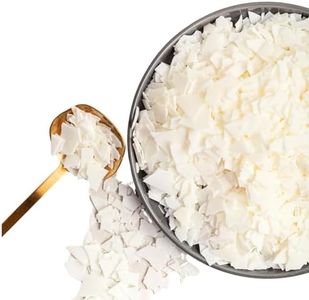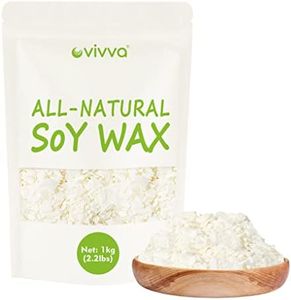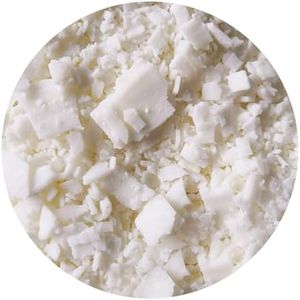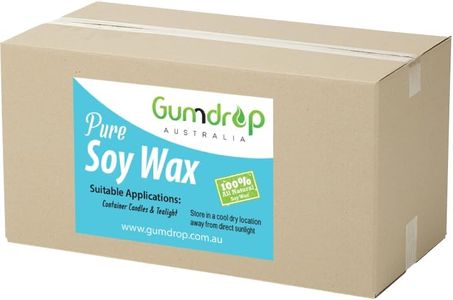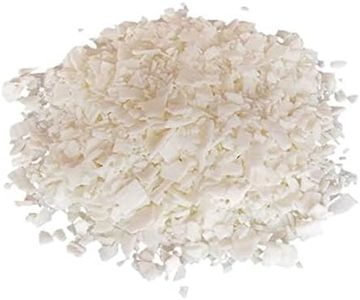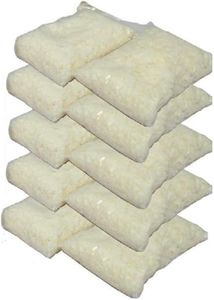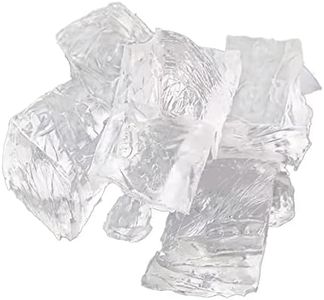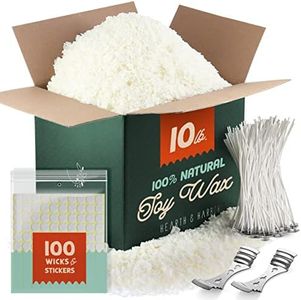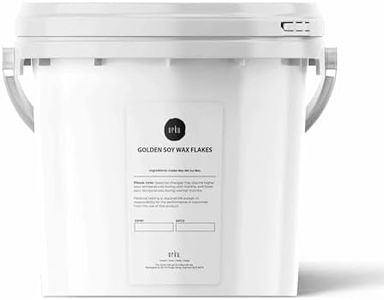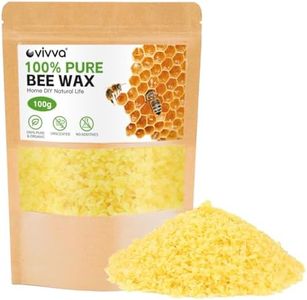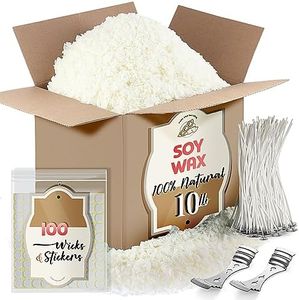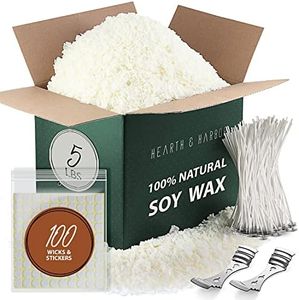We Use CookiesWe use cookies to enhance the security, performance,
functionality and for analytical and promotional activities. By continuing to browse this site you
are agreeing to our privacy policy
10 Best Candle Making Wax
From leading brands and best sellers available on the web.Buying Guide for the Best Candle Making Wax
Choosing the right wax for candle making is crucial, as it shapes your candle’s appearance, performance, and even its scent throw. Each kind of wax behaves differently, so understanding your project needs—like container type, desired finish, and scent strength—will help narrow down your options. Consider how you plan to use your candles (e.g., for gifts, home use, or selling) and the kind of experience you want to create with them.Wax TypeWax type refers to the basic material the candle wax is made from, with common types being soy, paraffin, beeswax, coconut, and blends. The type affects factors like burn time, scent throw, ease of use, and even eco-friendliness. Soy and coconut are plant-based, great for those seeking a natural option and good scent diffusion. Beeswax has a natural scent and burns longer, but isn’t vegan. Paraffin is widely available and excellent for color and scent but is petroleum-based. Blends combine benefits of multiple waxes. Choose the one that aligns with your values (natural vs. synthetic), project type, and desired performance.
Melting PointA wax’s melting point is the temperature at which it becomes fully liquid, and it can affect how well your candle holds shape, lasts, and resists heat in your environment. Lower melting points (around 120-130°F) are good for container candles that don’t need to stand up or travel, while higher melting points (around 145°F and above) are suited for pillar, votive, or taper candles that must keep their form, especially in warm rooms or during shipping. Think about where and how your candles will be used to determine the ideal melting point.
Scent ThrowScent throw is how well a wax disperses fragrance, both when the candle is unlit (cold throw) and when burning (hot throw). Some waxes, like soy and paraffin, are known for strong scent throw, making them good for scented candles. Beeswax and coconut, while lovely, often produce a softer scent. If you want a room-filling aroma, choose waxes recognized for good scent diffusion; if you prefer a subtle experience or plan to go fragrance-free, the scent throw is less critical.
Appearance and FinishAppearance and finish describe the look of the finished candle—how smooth, creamy, shiny, or rustic it appears. Some waxes give a glassy finish; others look matte or even have natural speckles. If appearance is important for your candles (for gifts or selling), choose a wax that is known for a smooth, even finish, especially if you use dyes. For rustic or natural candles, beeswax or textured blends may be more appealing. Consider what finish matches your style or the candle’s purpose.
Ease of UseEase of use refers to how simple the wax is to work with, including how forgiving it is of mistakes in temperature or mixing. Some waxes, like soy, are beginner-friendly because they’re easy to melt and pour, while others may need precise temperature control to avoid flaws like cracking or frosting. If you’re new to candle making, a wax praised for easy handling allows you to learn without stress; more experienced makers may opt for waxes that offer specific advantages, even if they’re trickier to use.
